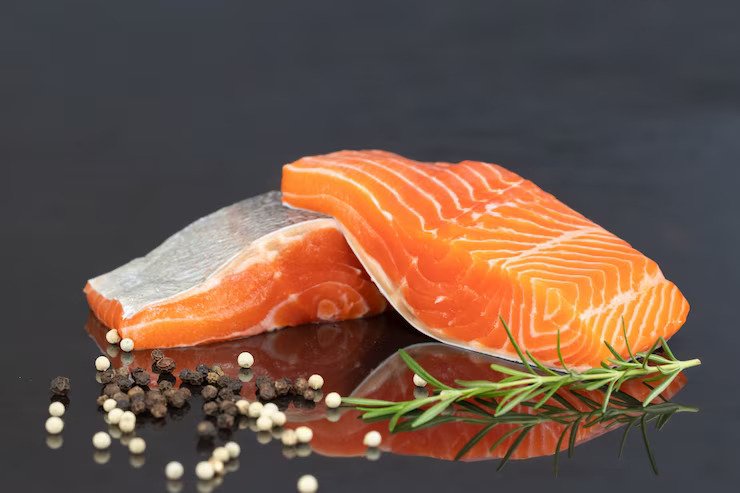Superfoods to Help Children Thrive : Adolescents often face several health challenges, including sexual risk behaviors, substance use, bullying and other social stressors; with proper guidance adolescence can become a period of healthy development and growth for most children.
Adolescents require nutrients to support brain development and lead a healthier lifestyle. Here are 10 superfoods that will boost both mental and physical wellbeing and increase school performance!
Superfoods have quickly become one of the go-to strategies for improving overall health and wellbeing in recent years, particularly among children and adolescents who require essential nutrition to grow and develop properly. Superfoods provide children and adolescents with essential nourishment they require for healthy development and growth.
Superfoods contain essential vitamins, minerals, and antioxidants that support good health and strength. Examples of superfoods include leafy greens, nuts, seeds, legumes, fruits.
Eating a diet rich in superfoods can ensure that children and adolescents get all of the essential vitamins and minerals required for optimal health.
1) Salmon

Salmon is an edible species of fish commonly consumed for its nutritious qualities. Commonly found both freshwater and marine waters, salmon is packed full of antioxidants, vitamin B12, omega-3 fatty acids, protein and many other essential nutrients that make up its make-up.
Atlantic and Pacific salmon are the two primary species of salmon, though there are others as well. Salmon are anadromous fish species – they’re born in freshwater but migrate out into salt water in order to reproduce.
Salmon are famously graceful fish with sleek bodies that undergo dramatic color transformation throughout their lives. When found in freshwater environments, Atlantic salmon are brown with spots, becoming silver when migrating out to sea waters.
Prior to spawning, male salmon undergo numerous changes. They may develop a hump, canine-like teeth or even develop an exaggerated curve of their jaws known as kype.
Salmon in their natural state travel hundreds of miles upstream against strong currents and rapids to reproduce, leaping as high as two metres to avoid obstacles along the way.
Fish and shellfish can provide valuable sources of protein, vitamins and minerals; however, there have been concerns about mercury content among certain species. To ensure maximum safety when choosing or eating these seafoods, opt for options with lower mercury concentration and consume them sparingly.
2) Eggs

Eggs are an excellent source of protein and essential nutrients, such as choline – an essential nutrient for brain health and function.
Beans also provide additional advantages for your child’s overall health and well-being, including being an excellent source of iron, zinc, vitamin D and phosphorus as well as vitamin A; which plays an integral role in eye health by helping prevent macular degeneration, cataracts and other vision-related conditions.
Eggs offer many health advantages, including being rich in dietary fibre that helps promote bowel function and lower the risk of diabetes and obesity. Furthermore, they’re an excellent source of vitamins and minerals like folate, selenium and zinc – which all play key roles in supporting immune health.
Eggs are an economical and nutritious choice for children, providing at least 2-5 servings of protein each day according to dietary guidelines for both adults and children. Eggs also make an ideal source of iron which may benefit infants and young children in particular.
3) Broccoli

Broccoli (Brassica oleracea italica) is an herbaceous cruciferous vegetable belonging to the Brassicaceae family and closely related to cabbage, Brussels sprouts, cauliflower, kale and kohlrabi.
Vitamin- and mineral-rich dairy foods contribute to your child’s overall wellbeing, including important components like lutein zeaxanthin, beta-carotene, thiamine and riboflavin.
Broccoli contains indole-3-carbinol, an antioxidant known to protect against cancer. Furthermore, broccoli’s high level of kaempferol antioxidant may also provide protection from heart disease, allergies, and inflammation.
Broccoli provides numerous benefits to children. It contains dietary fiber which helps regulate bowel movement. Plus, with low-cal content it can help them feel full after eating. In addition, broccoli also provides iron, calcium, and potassium which will strengthen bones and muscles of young ones.
4) Whole Grains

Whole grains provide a steady source of energy, high fibre and essential vitamins and minerals for active children and adolescents. Furthermore, whole grains have also been proven to improve brain function, concentration and creativity.
Eat wholegrains to reduce your risk of chronic illnesses like heart disease, type 2 diabetes and obesity. They’re also packed with phytochemicals (beneficial plant substances that protect against cancer and reduce inflammation in the body).
Always read and review labels of products claiming to contain whole grains before buying, as many may actually contain refined grains instead. Check for ingredients like wholemeal flour, wheat flakes, wholewheat pasta, brown rice, oats, barley and quinoa as indicators that the item does contain whole grain ingredients.
According to the 2010 National Health and Nutrition Examination Survey, children should consume half their grain servings as whole grains – an especially critical requirement for adolescents who must now add more whole grain foods into their school lunches.
However, intake remains low among youth despite increased attention on whole grains. Researchers from UF conducted an experimental school-based curriculum study in order to evaluate if its influence would alter consumption patterns among the students involved in it and their preferences for whole grain foods. They observed that after participating in this program students were more likely to consume whole grains and better identified them both at home and school.
5) Cheese

Cheese is an increasingly popular superfood that can support child and adolescent health, offering essential nutrition like protein, calcium and vitamin D which promote strong bones and muscles during growth and development. Cheese also contains other important elements like phosphorus, zinc and vitamin B12 which promote immune health while improving overall wellness.
Integrating cheese into your child’s diet is easy and fun! Cheese can add nutrition and delicious flavor to sandwiches, salads, pizzas and crackers or fruit snacks alike; plus it makes an excellent snack when served alongside crackers or fruit as a snack with crackers or fruit! However, when selecting cheese for children it is essential that you choose natural varieties with low sodium and fat contents for best results.
Overall, cheese can be an incredibly healthy addition to your child’s diet when taken in moderation and as part of a well-rounded meal plan. By including it into their meals plan regularly and in moderation, cheese will provide essential support for growth and development while providing them with delicious fuel that provides long-term energy boost.
6) Blueberries

Blueberries contain powerful antioxidants that help shield cells against the damaging effects of oxidative stress, an involuntary part of energy production that may also result from environmental factors like pollution, tobacco smoke and alcohol exposure.
Antioxidants are powerful molecules that can neutralize free radicals before they cause damage to cells or health problems, according to Zumpano. He notes these nutrients may reduce inflammation, protect against cancer and decrease heart disease risk – among other advantages.
Additionally, they help boost immunity, eye health, muscle growth and repair, potassium intake and other essential nutrients to help combat diabetes.
Blueberries are also effective at protecting against urinary tract infections (UTIs). Their antibacterial and antioxidant properties help ward off bacteria like E Coli, one of the primary causes of UTIs.
Blueberries contain anthocyanins, pterostilbene, and flavonoids that may help protect against various forms of disease – cancer being one. Their phenolic acids and anthocyanins may reduce proliferative, angiogenesis transcript levels and antiapoptotic cells known to contribute to tumor formation according to research.
Though blueberries are generally considered healthy food choices, too much of any nutrient can be harmful and should only be eaten in moderation.
7) Oats

Oats can help improve children and adolescent health in many ways. Rich in essential vitamins and minerals such as iron, zinc, magnesium, calcium and Vitamin B6, they contain everything children and adolescents need for overall wellbeing.
Oatmeal is an excellent source of complex carbs that provide sustained energy throughout the day, while its high fiber content helps promote regular digestion and promote healthy gut bacteria populations.
Oats are an excellent source of plant-based proteins and essential fatty acids essential for growth and development.
Oatmeal can be eaten for breakfast as a nutritious cereal or used in recipes, like oatmeal cookies and muffins, that support child and adolescent health.
8) Sweet Potatoes

Sweet potatoes are an nutrient-rich superfood that can support child and adolescent health, boasting rich sources of fiber, vitamins, and minerals essential for growth and development.
Sweet potatoes are an excellent source of complex carbohydrates that provide sustained energy to help children and adolescents remain active during the day.
Sweet potatoes contain antioxidants which may provide protection from chronic diseases and inflammation.
Sweet potatoes can add delicious nutrition and delicious taste to your child’s diet by being baked, roasted or mashed – not forgetting their use in soups, stews and salads – making sweet potatoes an easy and tasty way to improve overall health and well-being.
9) Yogurt

Yogurt is an amazing source of essential nutrients and probiotics that can make a significant contribution to children’s overall health and development. Calcium from yogurt provides vital support for strong bones and teeth development.
Yogurt contains probiotics which are proven to aid digestion and strengthen immunity, helping reduce infections and illnesses while building and repairing muscles and tissues. Plus, yogurt contains protein for building and repairing them!
Parents should opt for plain, unsweetened yogurt when selecting yogurts for their children as flavored varieties contain additional sugars that could increase health concerns. Furthermore, fresh fruits or honey could add natural sweetness while providing essential nutritional support.
Overall, adding yogurt to a child’s diet is a simple and delicious way to promote their overall health and well-being.
10) Milk
Milk is one of the most easily consumed and widely accessible superfoods for children and adolescents, providing them with vital calcium that aids bone and teeth development.
Milk contains many other essential nutrients, such as Vitamin D for calcium absorption and protein for muscle growth and repair. Furthermore, milk is an excellent source of iodine essential for thyroid health as well as vitamin B12 which plays an essential role in supporting normal nervous system functions.
Children and adolescents who regularly consume milk are more likely to have higher bone density, higher muscle mass, and stronger teeth. It is recommended that they consume at least two servings of dairy products each day in order to meet their daily nutrient requirements.
Conclusion
Overall, adding superfoods into a child or adolescent’s diet can have a dramatic impact on their overall health and well-being. Superfoods are rich in a range of essential vitamins, minerals, and antioxidants – providing vital nutrition.
Superfoods can help improve immunity, support brain development, and support healthy growth and development. Some examples include berries, leafy greens, nuts and seeds, fatty fish, and whole grains as examples of superfoods.
Parents can ensure their child receives all the essential nutrients by including superfoods in their diet, which can provide numerous health benefits. While superfoods may contain many positive components, for optimal results they should be consumed as part of a varied and well-rounded meal plan with various foods from all food groups.
Also Read:- Five Steps To Planning A Healthy And Balanced Meal Plan







